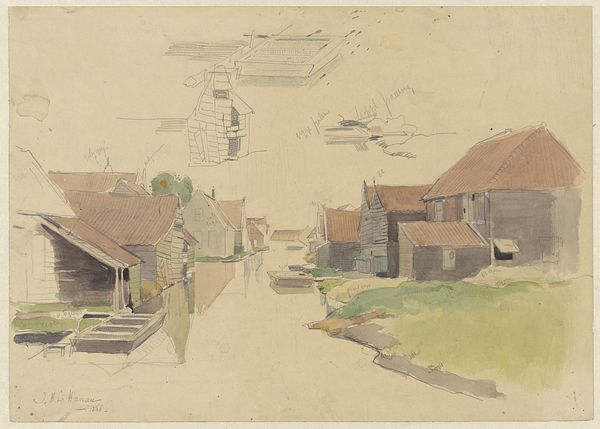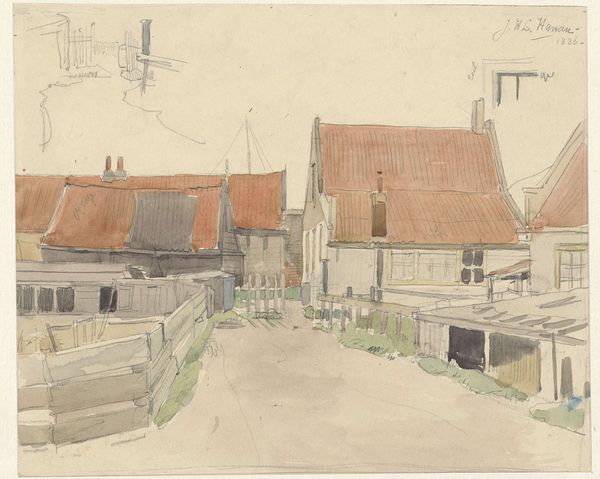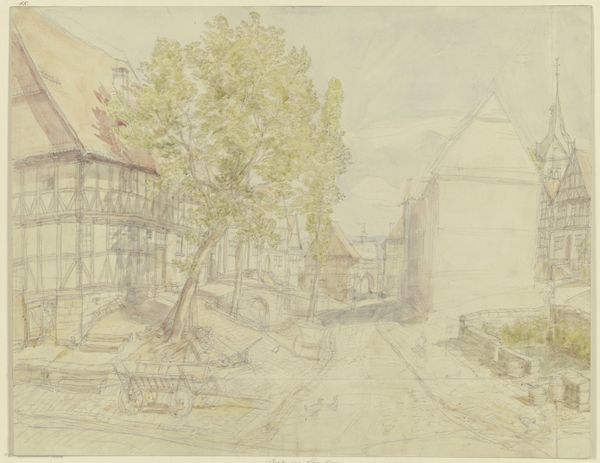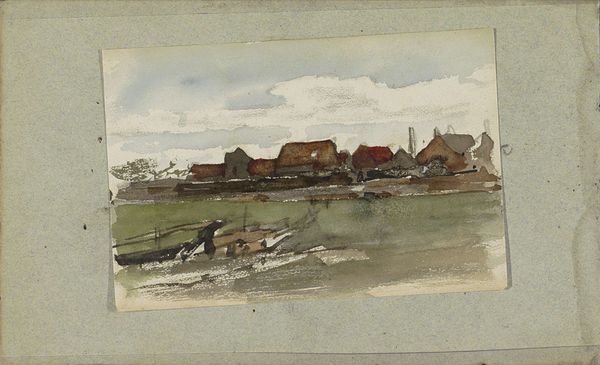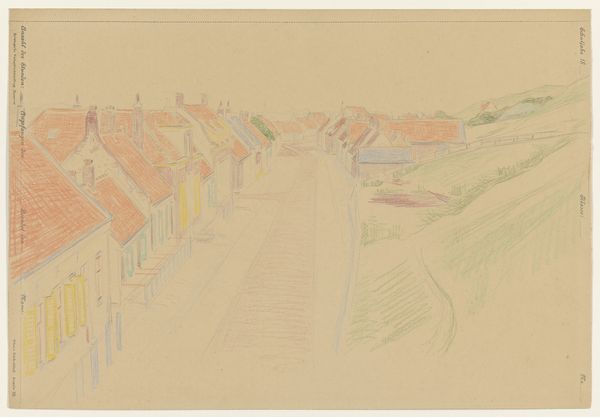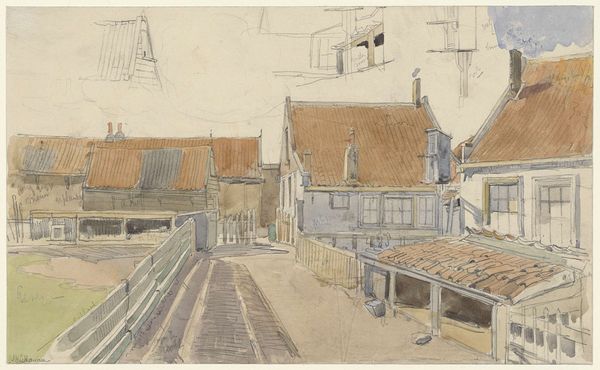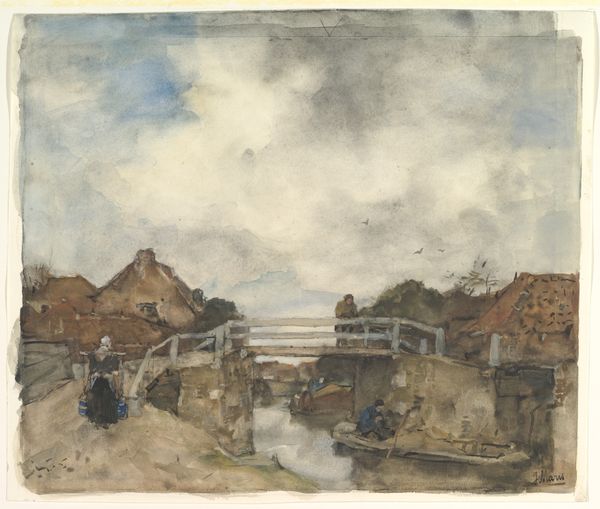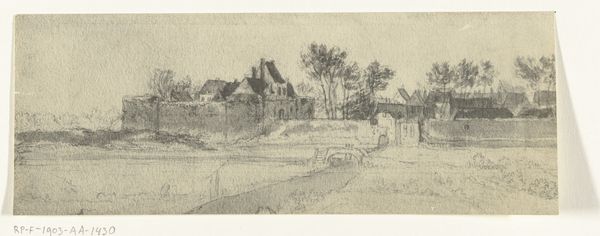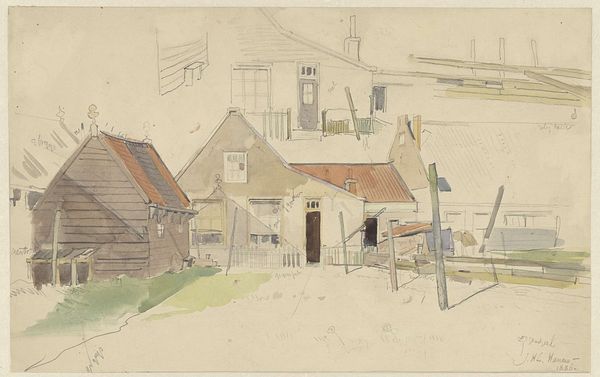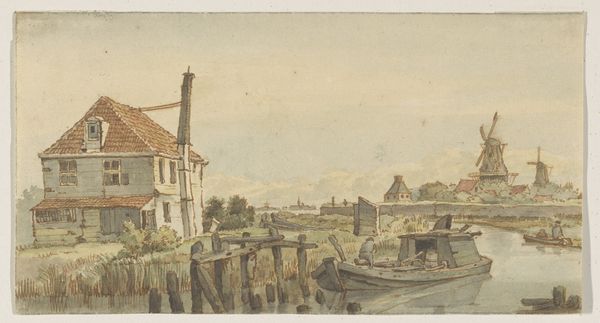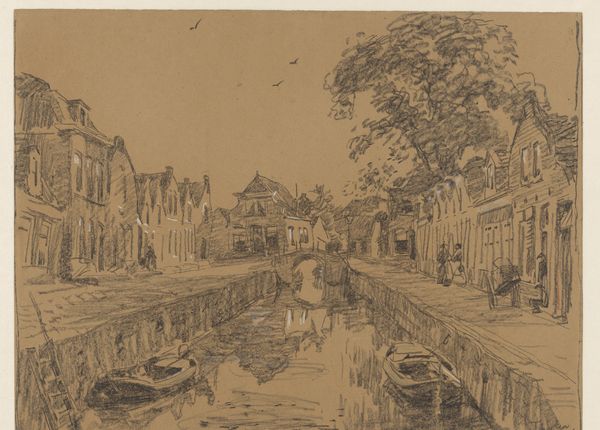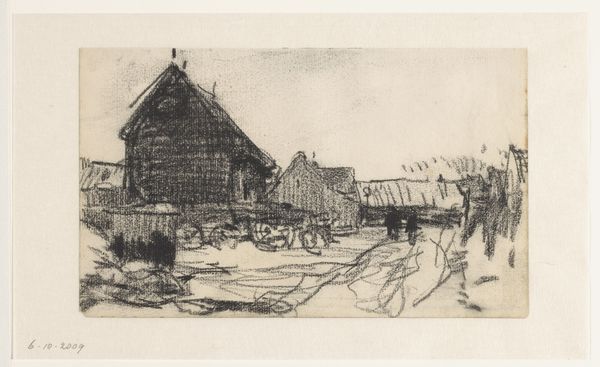
watercolor
#
dutch-golden-age
#
impressionism
#
landscape
#
watercolor
#
coloured pencil
#
cityscape
#
watercolor
#
realism
Dimensions: height 333 mm, width 500 mm
Copyright: Rijks Museum: Open Domain
Curator: Immediately, I find this watercolor so serene; the reflections in the water are almost hypnotic. Editor: Yes, Jan H.L. Hanau captured this scene, "Vinkenbuurt te Amsterdam," in 1886, presenting a seemingly tranquil Dutch neighborhood. Let’s consider its context; Amsterdam during this period was experiencing significant growth and industrial change. How might that tension inform our reading of this calm scene? Curator: I'm curious about the role of waterways within the lives of women at the time, both the labor and possible social interaction—what narratives can we piece together of the lived experience from this scene? The subdued colors—primarily browns, reds, and greens— evoke a specific kind of muted reality. Editor: And those subdued tones are very characteristic of the Realist movement. The artist is capturing a moment in time, aiming for accuracy. One has to ask, of course, for whom? And was it actually accurate, considering that the "accuracy" depends entirely upon the interpretation, including subjective choices, in painting or composition... Curator: Precisely. Perhaps the piece offers a visual counterpoint, perhaps even a quiet resistance, to the rapid industrialisation that was overtaking the city. The ordinary dwellings stand at the bank as a form of resilience and belonging to a specific neighborhood or social group. Editor: Yes, and consider how this image, depicting ordinary homes in Amsterdam, might have functioned within the burgeoning art market, which was simultaneously reflecting and constructing a national identity. Was it intended as a purely documentary image, or to conjure nostalgia for a particular, perhaps disappearing, way of life? Curator: Absolutely, that opens a pathway into the study of the power of nostalgia as both personal experience and a political movement. Water and architecture and their interaction tell us as well that ecological balance always shapes humans lives—this scene offers so many important areas to keep discussing. Editor: Indeed. Reflecting on "Vinkenbuurt te Amsterdam," it seems a potent reminder that artworks function both as aesthetic objects and complex social documents, inviting diverse, critical engagements across time.
Comments
No comments
Be the first to comment and join the conversation on the ultimate creative platform.
